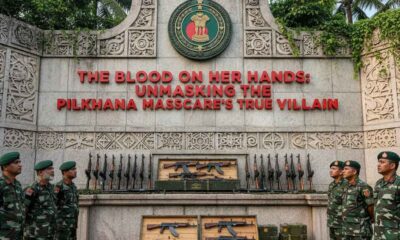Breaking
Escalating Tensions: Israel’s Strikes Leave Iran’s Air Defenses Vulnerable as Tehran Vows Retaliation

Tehran and Tel Aviv— Escalating tensions between Israel and Iran have reached a critical point following a series of precise Israeli airstrikes that targeted and weakened Iran’s integrated air defense systems and ballistic missile production facilities. Strikes carried out on October 26, have left Tehran vulnerable to future attacks, prompting threats of retaliation from Supreme Leader Ayatollah Ali Khamenei, who warned that the U.S. and Israel would face a “crushing response” for ir actions against Iran and its regional allies.
Recent strikes, described as “exact, effective, and powerful” by an Israeli security official who spoke on condition of anonymity, hit several strategic military installations. According to officials, it included radar sites and S-300 missile systems, Russian-made surface-to-air defenses among Iran’s arsenal’s most advanced assets. Targeted strikes left Tehran at a significant disadvantage, compromising its air-defense capabilities.
Strikes followed Iran’s retaliatory ballistic missile launch at the start of October, a response to a previous round of Israeli attacks. In retaliation for Iran’s missile activity, Israel executed this calculated strike, aiming to disrupt Iran’s ability to protect its airspace and bolster its missile production. According to security sources, strikes successfully limited Iran’s immediate defensive response options.
Degradation of Iran’s Air Defenses Raises New Risks
Iran’s reliance on a networked air defense system is central to its strategy to deter external attacks. By focusing on this, Israel’s latest strikes may have opened an opportunity for future operations with reduced risk. Washington-based Institute for Study of War echoed this sentiment in a recent analysis, noting that Iran’s air-defense system has been “significantly degraded” and any future Israeli actions could now be “easier and less risky.”
Israeli Defense Minister Yoav Gallant commented on operational gains from strikes, stating that Iran’s “huge disadvantage” offers Israel a considerable advantage for potential future engagements. While Israel’s Defense Ministry has not disclosed specific targets, satellite images from Planet Labs PBC reveal visible damage to structures at the Parchin facility, known for its missile development, and or sites.
Despite damage, analysts caution against underestimating Iran’s capabilities. Though weakened, Iran’s missile stockpile remains extensive, with thousands of ballistic missiles and hundreds launched in previous attacks on Israel. However, recent damage to production facilities could limit Iran’s ability to replenish its arsenal, potentially altering Tehran’s calculus in future confrontations.
Iran’s Strategic Challenge: To Retaliate or Restrain?
Iran now faces a complex decision. Khamenei’s commitment to retaliation may prompt a response against Israeli or U.S. interests in the region. However, Tehran’s diminished defenses and weakened missile production capacity may force it to weigh the costs of a direct response, which could invite further Israeli strikes and plunge the region into a broader conflict.
Iran’s traditional approach to countering Israel has involved leveraging proxy forces within its “Resistance Front,” which includes groups in Lebanon, Syria, Iraq, and Yemen. Analysts speculate that Tehran might rely on its allies to avoid direct escalation while still pressuring Israeli interests. Yet, any Iranian move could escalate quickly, dragging the U.S. further into the fray.
U.S. Military Preparations and Deterrence Efforts
Anticipating potential Iranian retaliation, the United States has increased its military presence in the region. The Pentagon recently deployed additional missile defense systems, warships, and aircraft to reinforce Israel’s defenses. A spokesperson from the Pentagon confirmed that the moves are intended to “protect U.S. citizens and forces in the Middle East, defend Israel, and pursue de-escalation through deterrence and diplomacy.”
Pentagon’s force posture changes signify Washington’s commitment to supporting Israel amid increasing hostilities, with the U.S. prepared to respond if Tehran escalates the situation. This level of military preparedness may act as a deterrent, but it also underscores the U.S.’s readiness to defend its allies should Iran launch further attacks.
Regional Implications and Uncertain Future
With Ayatollah Khamenei’s latest warnings, Middle Eastern analysts are concerned about the potential for widespread destabilization. Many observers fear that if Iran retaliates in a significant way, it could prompt a devastating cycle of retaliation that draws in multiple regional actors.
Since the October 7 Hamas attack on Israel, which killed hundreds, the region has been on edge, with increasing confrontations involving Iran-linked groups. Furr Iranian strikes or proxy-led attacks could potentially draw Israel into conflicts on multiple fronts, raising the risk of broader hostilities that could engage both regional powers and external forces.
As both Israel and Iran brace for possible confrontations, diplomatic efforts remain critical. Experts warn that continued military exchanges could close off opportunities for dialogue, particularly as Iran’s options narrow. However, with Tehran now backed into a corner and Israel’s security posture unyielding, the prospect of escalation remains high.
- Israel’s use of air-launched ballistic missiles against Iran sparks market interest in The Times of Israel.
- Iran is now dangerously vulnerable to the consequences of another attack on Israel Business Insider.










